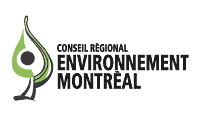
In July 2018, Les Amis du Parc Meadowbrook shone a light on the condition of the St. Pierre River where it flows through Meadowbrook. A Superior Court decision had just been handed down requiring the City of Montreal to stop polluting what is left of a once-mighty river. But what had seemed like a good idea proved complicated to execute.
The City of Montreal was aware of the pollution as early as 2002, as identified in sampling done by the Réseau de suivi des milieux aquatiques at the time. The pollution appears to come from residential sewers in Montreal West and Côte Saint-Luc that are connected to the rainwater system rather than to sanitary installations. A 2014 City of Montreal study of the Toe Blake rainwater collector showed 250 such crossed connections.
Repairing faulty connections is costly. They must first be located; then roadways must be excavated down to the storm sewers, which are usually much deeper than the sanitary installations. These connections often date back to the building of the house, and current occupants may not be aware of the situation. At issue is who is responsible for the repairs.
Because the problem was a long-standing one, the Superior Court gave the City of Montreal two years to correct it. The City appealed unsuccessfully. Facing a hard deadline, the City chose to divert the Toe Blake collector during dry periods. The collector would then continue to play its role during storms, averting overflow and potential flooding of basements.
The work was done in February of this year, and has changed the river significantly. The City promised to set the level of the collector to avoid the river running dry. Many Meadowbrook members have contacted us over the months to report extremely low water levels in the river, which is often just a series of unconnected puddles dotting the rocky riverbed and becomes a river again only after a good downpour.
Les Amis spoke to Professor Daniel Rivest of UQAM to learn the impact of changing water levels on the river’s ecosystem. He pointed out that the transitory nature of the river would prevent benthic macroinvertebrates from settling permanently on the riverbed. These insects, worms and crustaceans are a prime indicator of the health of a river or lake. They are an important link in the food chain, as a source of food for fish, amphibians and birds. Some species act as filters, while others break down matter and cause it to decompose and can therefore play a role in cleaning up a stream. Some species can survive drought, others cannot. Protecting the river is vital to preserve this ecosystem and the animals that depend on it.
Studies of the St. Pierre River
Two studies of the St. Pierre River have recently been published. The first was done by Les Amis du Parc Meadowbrook at the invitation of the Istituto per la Bioeconomia of the Consiglio Nazionale delle Ricerche, for an international conference on daylighting rivers to be held in December in Florence, Italy.
You can learn more about the history of the St. Pierre, its challenges and future here:
Meadowbrook members Kregg Hetherington and Tricia Toso of the Concordia University Ethnography Lab have also taken a closer look at the river in a recently published article https://www.anthropocenes.net/articles/10.16997/ahip.6/
Good reading!










 the return of birdsong, especially with fewer automobiles on the road since COVID-19.
the return of birdsong, especially with fewer automobiles on the road since COVID-19.












